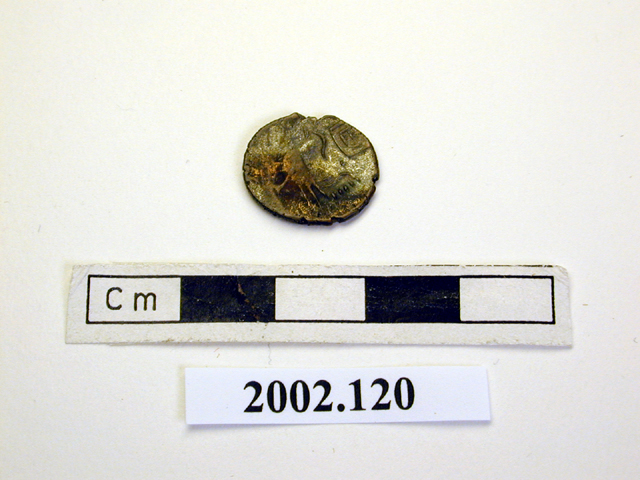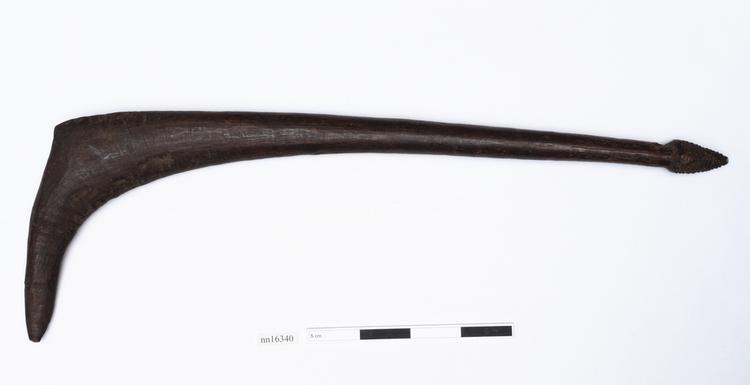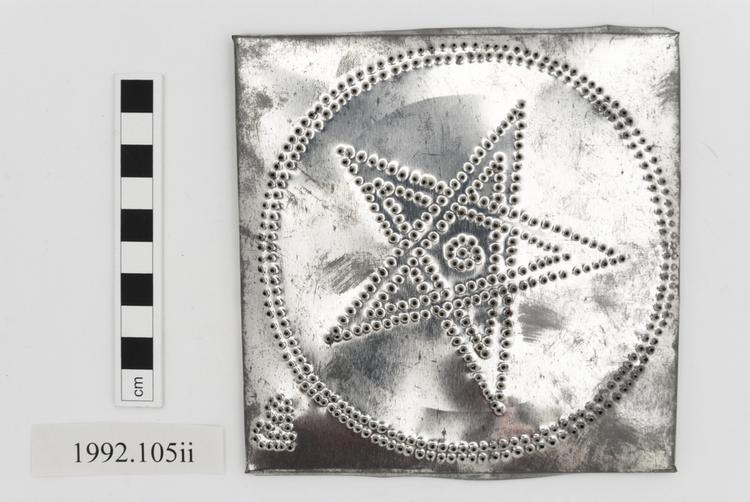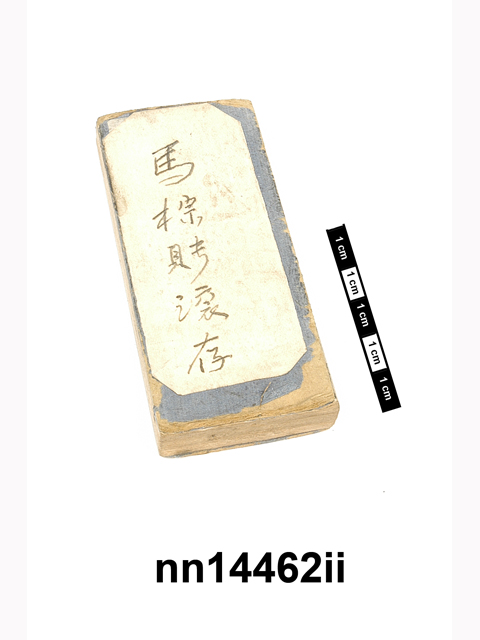
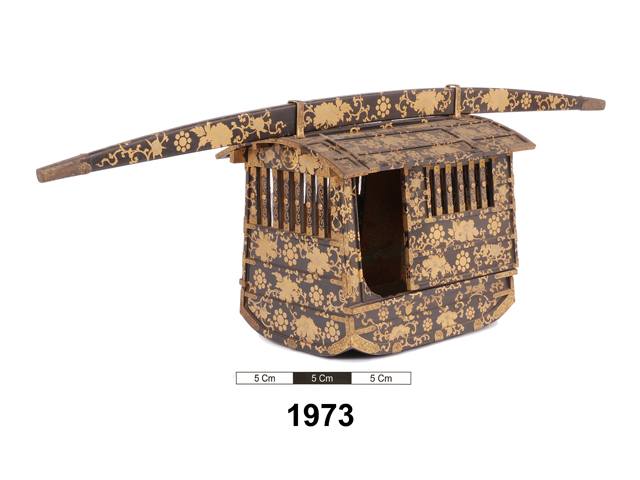
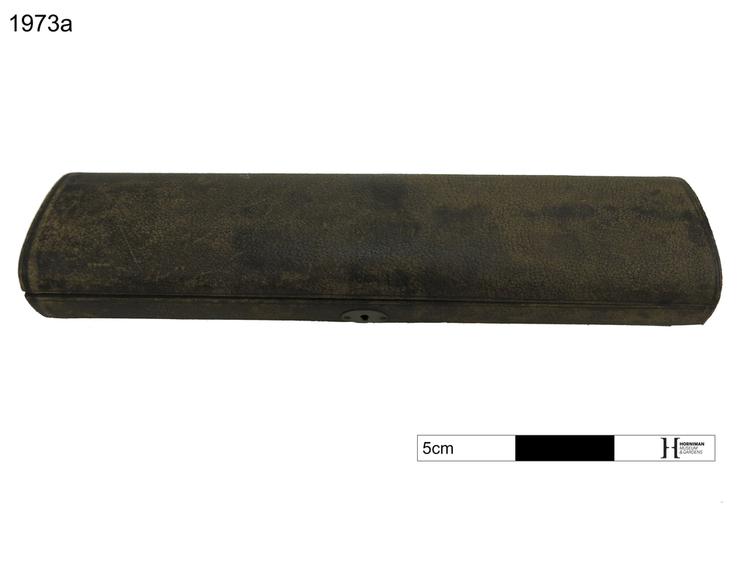
Model palanquin, norimono, of wood that has been lacquered black, with floral (peony) decoration in gold (maki-e). This represents a type that would have been used by a woman. The cabin is box-shaped, with a curved base, narrowing towards the roof, which is also curved. There are sliding doors at each side, and strut-covered window openings in the upper part of each side, and one end. The structure is reinforced with horizontal bands along the sides and across the roof, which has hinged flaps at each side, both very stiff.
The interior is mostly gilt with a painting of a landscape with pine trees, and flying cranes with baby cranes at one end. Opposite the crane painting are slits, and there would have been a shade, now broken off. This end is painted with a scene of spring fields. Both sides have paintings of autumnal fields. On the ceiling are grape vines.
On the roof of the carriage are two metal brackets, through which a curved beam is inserted, projecting to the front and rear, by means of which a palanquin of the type represented by the model would have been carried by the bearers. The ends are reinforced by brass fittings. The crest of bamboo and sparrow under the pole was used by the Date family. The crest of nine stars was used by the Hosokawa family. It may represent a marriage between the two families. The flowers are peonies.




